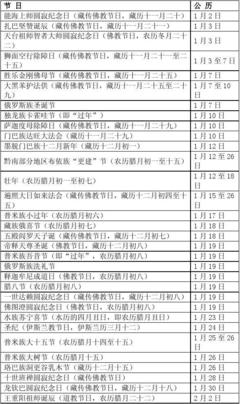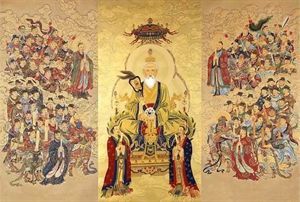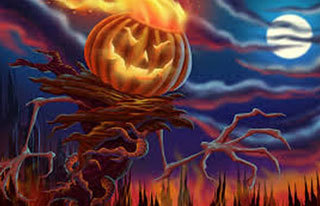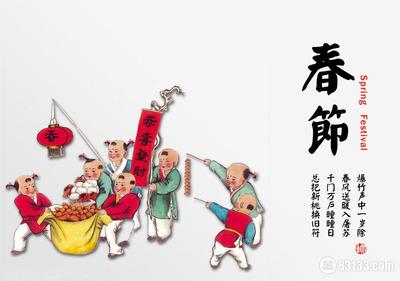每年的十月是印度一年中最重要的节日Diwali,排灯节,其重要程度 堪比中国春节。
排灯节是“印度教的”(Hindu)四大节日之一,来源有各种各样的说法。一种说法是Lakshmi, the goddess ofwealth(财富和吉运女神拉克西米)在灯节这一天下凡,凡是她目光所及之处,财富就会降临,所以人们“clean thehome”(打扫屋子),“open the windows”(打开窗),“light the lamps and candles”(点起灯和蜡烛)以吸引女神的目光。
如今的印度,灯节的宗教意味已经比较淡化了,排灯节对每一个人来说都是家庭聚会的时刻。在印度教徒的家中,大家互相交换礼物、自制的糖果和卡片;所有的房子都用divas(油灯)装点一番,并以彩色粉末绘成Rangolis(干彩粉末制成的地画)放置在门口,吸引财富和吉运女神Lakshmi前来。大家聚集一堂敬拜、欢庆新年的到来,边吃边跳。
排灯节共有5天,每天都有不同的意义。
节日的第一天称为”Dhan Trayodashi” or “Dhanteras”,人们敬拜女神Lakshmi,并买”utensilsmade of silver”(银餐具)。
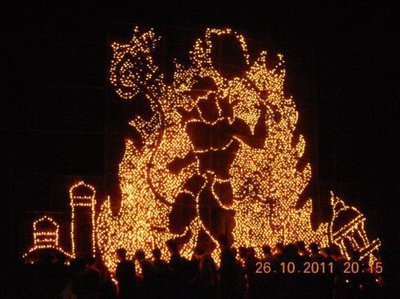
节日的第二天称为”Narak Chaturdashi”,或通常称为“Chhoti Diwali”(意思是小迪瓦利)。这一天祭拜Kali, the goddess of Strength(力量女神kali)。
节日的第三天称为“Badi Diwali”,是节日最主要的一天,也是印度年的最后一天。这一天,大家都要“perform LakshmiPuja ”(worship of divine GoddessLakshmi,祭拜财富和吉运女神拉克西米,Puja就是祭拜的意思),祈祷获得“wealth”(财富)和“prosperity”(繁荣)。家家还点上蜡烛和别具特色的小油灯。这些灯象征着“knowledge”(知识)。
节日的第四天,也就是新年的第一天,也是印度财政年的开始。
节日的第五天称为“Bhai Dooj”(Brother’s day兄弟日),这一天是“honor the brother-sisterrelationship”(对兄弟姐妹关系表示敬意)的日子。还包括“Bursting crackers”(放爆竹),“socialgatherings”(社交聚会), “exchange of sweets andgifts”(互赠甜点和礼物)。
google了一下:
Diwalialsocalledthe "festival oflights", is a five-dayHindu festivalwhich startsonDhanteras, celebrated on the thirteenth lunar dayof KrishnaPaksha(waning moonfortnight) oftheHinducalendarmonthAshvinand endsonBhau-beej, celebrated on the second lunar day ofShukla Paksha (waxing moon fortnight) of themonthKartik.Dhanterasusually falls eighteendays afterDussehra. In theGregorian calendar, Diwali falls betweenmid-October and mid-November.
Diwali is an official holiday in India,Nepal, SriLanka, Myanmar, Mauritius, Guyana,Trinidad& Tobago, Suriname, Malaysia, Singapore andFiji.
ForHindus, Diwali is one of the most importantfestivals of the year and is celebrated in families by performingtraditional activities together in their homes.ForJains, Diwali marks the attainmentofmokshaornirvanabyMahavirain 527BC.For Sikhs, Diwali is particularly importantbecause it celebrates the release from prison of the sixth guru,Guru Hargobind, and 52 other princes with him, in1619.AryaSamajists, celebrate this day as Death AnniversaryofSwami DayanandSaraswati.They also celebrate this day asShardiya Nav-Shasyeshti.
The name "Diwali" or "Divali" is a contraction of deepavali whichtranslates into "row of lamps".Diwali involvesthe lighting of small clay lamps filled with oil to signify thetriumph of good over evil.These lamps are kept onduring the night and one's house is cleaned, both done in order tomake the goddessLakshmifeelwelcome.Firecrackersare burst becauseit is believed that it drives awayevil spirits.During Diwali,all the celebrants wear new clothes andsharesweetsand snacks with familymembers and friends.
The festival starts withDhanterasonwhich most Indian business communities begin their financial year.The second day of the festival is called theNaraka Chaturdasi.Amavasya,the third day of Diwali, marks the worship ofLakshmi,the goddess of wealth. The fourth day of Diwali is knownasKartikaShudda Padyami.The fifth day is referred to asYamaDvitiya,and on this day sisters invite their brothers to theirhomes.Spiritual significance
While Diwali is popularly known as the "festival of lights", themost significant spiritual meaning behind it is "the awareness ofthe inner light". Central to Hindu philosophy (primarilytheYoga,Vedanta, andSamkhyaschoolsofHindu philosophy) is the belief thatthere is something beyond the physical body and mind which is pure,infinite, and eternal, called theAtman. The celebration of Diwali as the"victory of good over evil", refers to the light of higherknowledge dispelling all ignorance, the ignorance that masks one'strue nature, not as the body, but as the unchanging,infinite,immanentandtranscendentreality.With this awakening comes compassion and the awareness of theoneness of all things (higher knowledge). Thisbringsananda(joy or peace). Justas we celebrate the birth of our physical being, Diwali is thecelebration of this Inner Light.
While the story behind Diwali and the manner of celebration variesfrom region to region (festive fireworks,worship,lights, sharing of sweets), the essence is the same – to rejoice inthe Inner Light (Atman)or the underlying Reality of all things (Brahman). 爱华网
爱华网